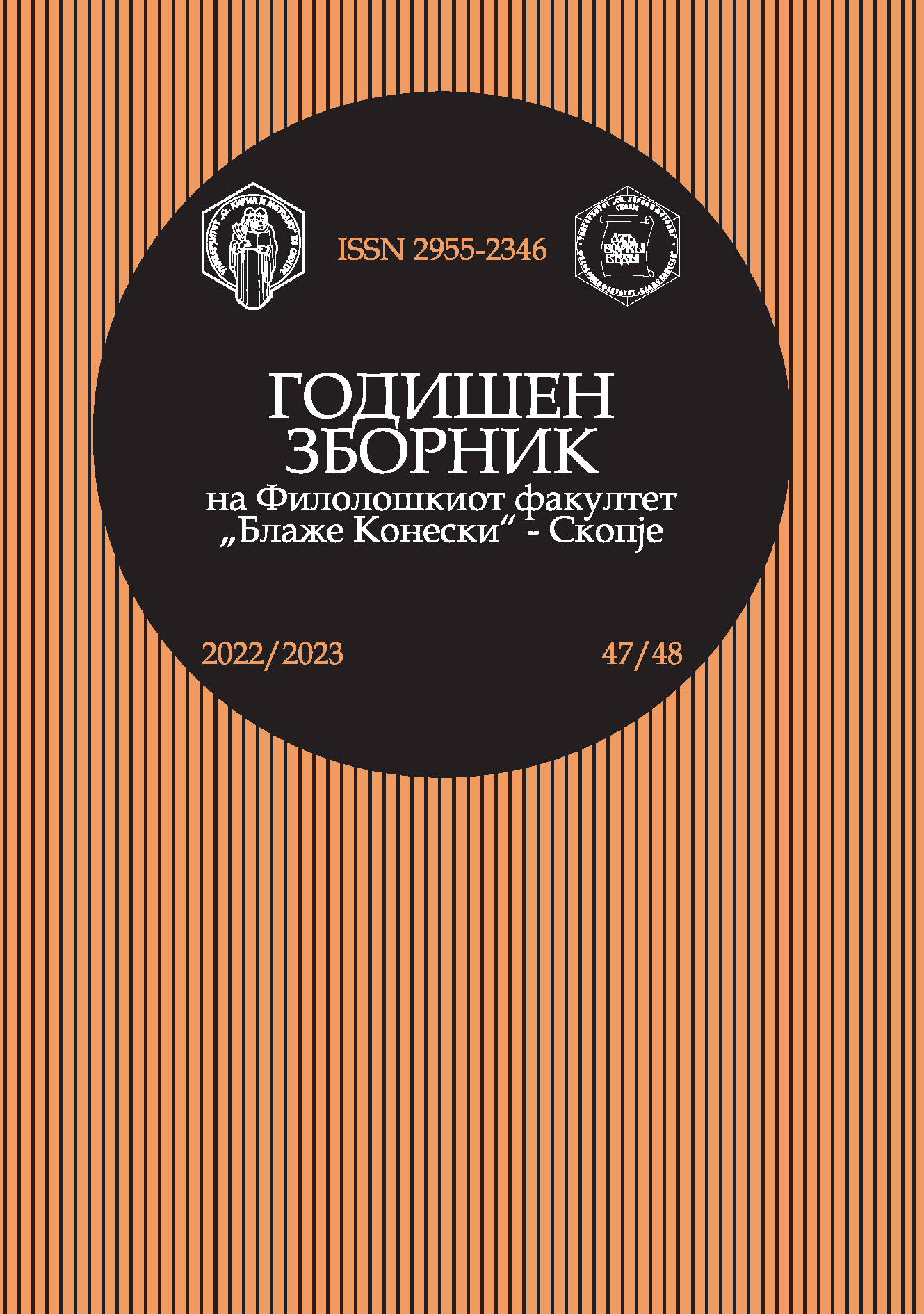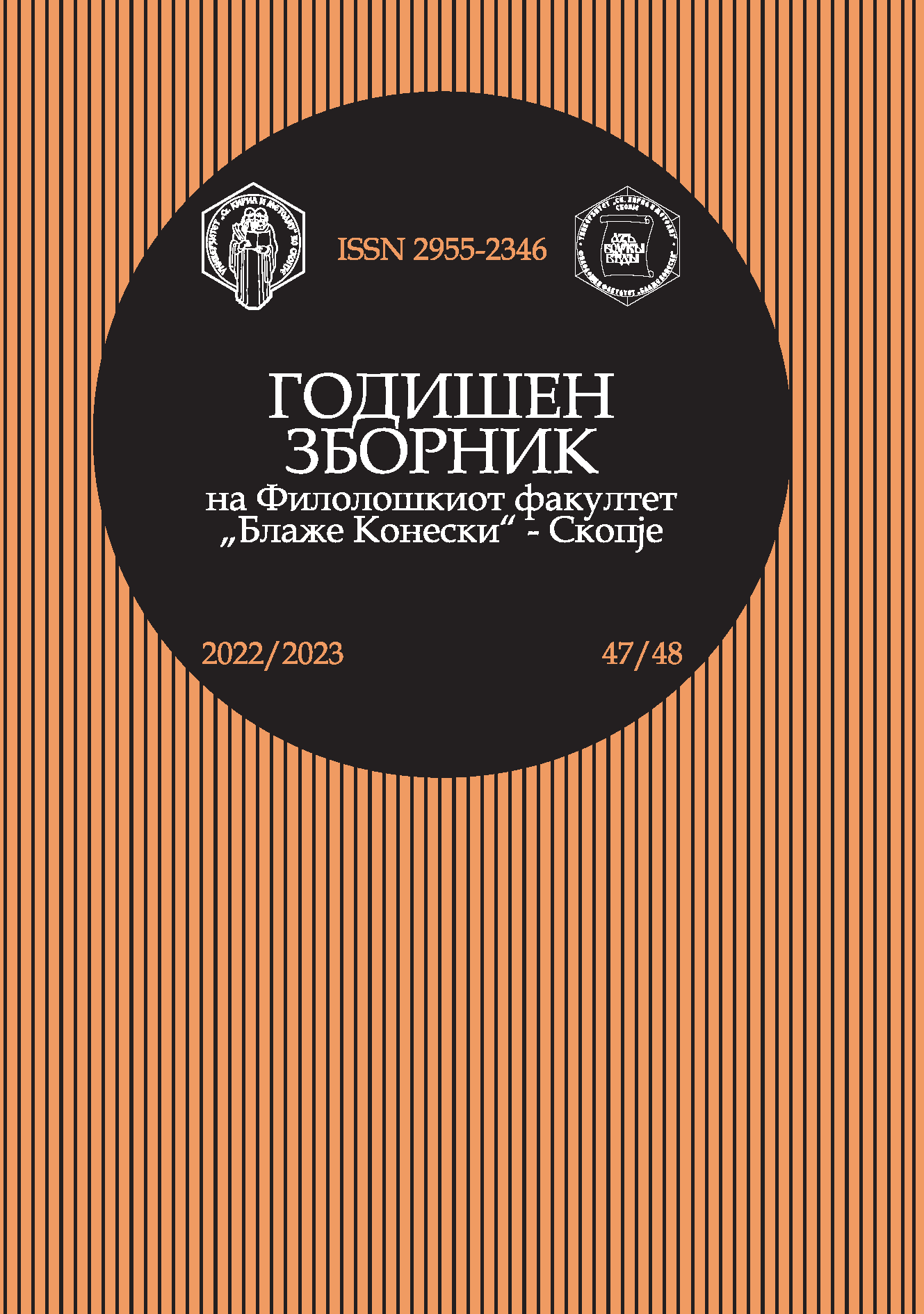Употребата на да-конструкцијата со модалните и со фазните глаголи во македонскиот јазик и нејзините еквиваленти во шпанскиот јазик
ДОИ:
https://doi.org/10.37834/GZF2247-48407pКлучни зборови:
да-конструкција, инфинитив, модални глаголи, фазни глаголиАпстракт
The da-construction in the Macedonian language, also known under the terms optative-subjunctive, subjunctive, conjunctive (Minova-Gjrkova 2000: 75), besides in its independent use, is most often found in combination with modal and phase verbs. The modal verbs in the Macedonian language mora, mozhe, smee, treba and saka and according to Georgievski (Георгиевски 2009: 18) they necessarily require the specific content of the action to be expressed with a da-construction. According to Georgievski (Георгиевски 2009), the phase verbs are used to determine the phases of an action, that is, they express the initial or inhoative phase (pochne/pochnuva), the continuation of the phase (prodolzhi/prodolzhuva) and the final or terminative phase (prestane/prestanuva). Both the modality and the phase of actions are linguistic universals, so we can review them in other languages as well. In the Spanish language, as our object of interest besides the Macedonian, we notice the use of the modal and the phase verbs with infinitive (in the place where the da-construction stands in Macedonian). Hence, we consider the da-construction in the Macedonian and the infinitive in the Spanish as equivalents in the indicated situations. In the Spanish language, the modal verbs are: poder, deber, haber and tener (RAE 2010), and the phase verbs are also divided into three groups: the initial (empezar, comenzar), the final (terminar, acabar), and the phase expression a pause in the action (dejar, cesar).



